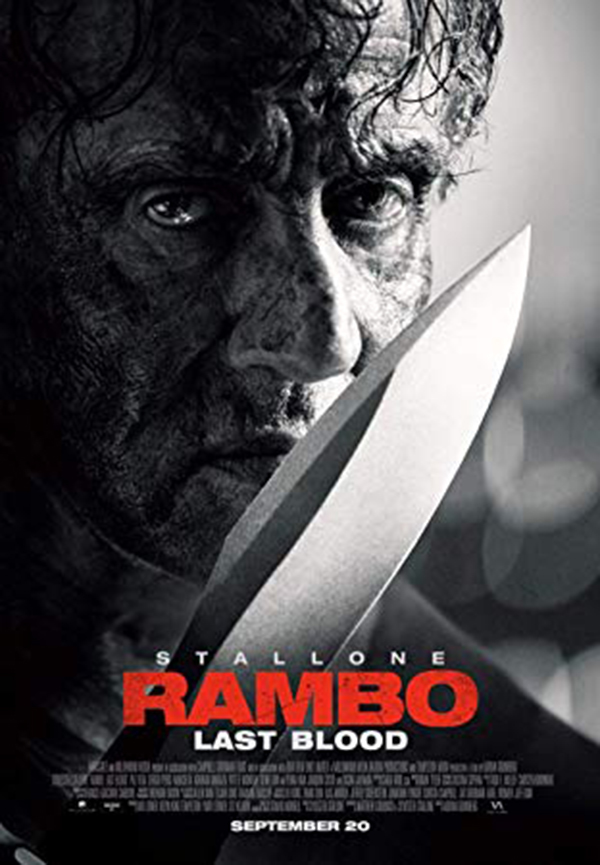The character John Rambo is back in theatres with the release of the fifth film of the series, Rambo: Last Blood. Now, the veteran is seen helping rescue teams and taking care of his father’s ranch alongside his friend Maria and her granddaughter Gabrielle. While the plot shows promise, it lacked action and didn’t receive the same positive reaction from audiences of the previous films..
In the movie, Gabrielle finds out the location of her birth father from a friend. Against the wishes of her grandmother and Rambo, she sets off to Mexico to find him. After a negative encounter with her birth father, she goes to a club and subsequently does not return. Gabrielle’s friend calls the Rambo household to inform them that she went missing, which inspires Rambo to go south to find Gabrielle. Unfortunately, he discovers that she has been taken by a cartel associated with trafficking drugs and women.
After arriving in Mexico, Rambo questions her birth father and her friend, finding out Gabrielle’s last known location was in a club. At the club, he encounters an independent journalist named Carmen Delgado, who gives him a tip on where Gabrielle is and one of the men involved. Later, Rambo heads to the location and ends up getting attacked by 30+ cartel members. The cartel finds out whom he is looking for and warns him that she will be mistreated even more.
Rambo gets knocked unconscious for several days, but the journalist takes care of him. Upon waking up, he pressures Carmen for more details and finds out the location of one of the brothels owned by the cartel, where Gabrielle was located. He goes to the brothels, kills many of the men inside, and finds Gabrielle, who has been forced to consume drugs. On the way home, she ends up passing away from an overdose. As a response, Rambo begins to seek vengeance for her death.
Prior to the movies climax, Rambo is seen setting up traps in his bunker. The movie spent a lot of time on the scene, building up tension for the coming fight The traps were elaborative and creative, so I had high expectations on what was to follow. The climax of the film was a letdown, focusing more on the enemies falling for the traps than the fighting Rambo is known for. It wrapped up very quickly, leaving me to wonder “Is that it?” The entire scene left me wanting more.
The most significant criticism that I have of the film is that it seems fueled by stereotypes depicted in political propaganda and media. I felt that some scenes were uncomfortable to watch, as a lot of violence towards women was shown, including physical violence, drugging, and sexual assault. If I was watching the movie at home, I would have switched it for another. Furthermore, depictions of an unsecured border spawned questions of being able to cross without identification, having visible weapons on hand, having multiple trucks full of people, each with weapons, and having dead bodies in the car. It holds a lot of questions about how they were able to go through the border freely. In turn, the movie feels as though it’s fueling the “fake news” perspectives regarding the south of the border.
After spending time in Mexico myself, this actually bothered me because not everyone is a criminal nor a “bad hombre” as infamously stated by Donald Trump. It is difficult to picture family members hating on each other like the two head members of the cartel or the birth father wanting nothing to do with his daughter considering the importance of family in Mexico. Furthermore, Mexico does not feel as unsafe as the movie pictured. Obviously, there are negative aspects to every country, but it felt as though Mexico was not positively portrayed in the film. For example, the government created a “magic towns” initiative that promoted tourism to small towns that have natural beauty, enriching cultures, and are historic in reality. Each town in the initiative, and others that are not, have a similar appearance (especially the architecture of buildings) that entice you to want to explore them. In contrast, the movie made the environment feel more unsettling and somewhere that you would not want to be near.
If you are a fan of the previous Rambo films and feel the need to watch ***Rambo: Last Blood, do not hold high expectations. If you have not watched any of the films previously, I would not recommend starting with this one. Hopefully, **Rambo: Last Blood will be the last in the series, or at least forgotten over time.


